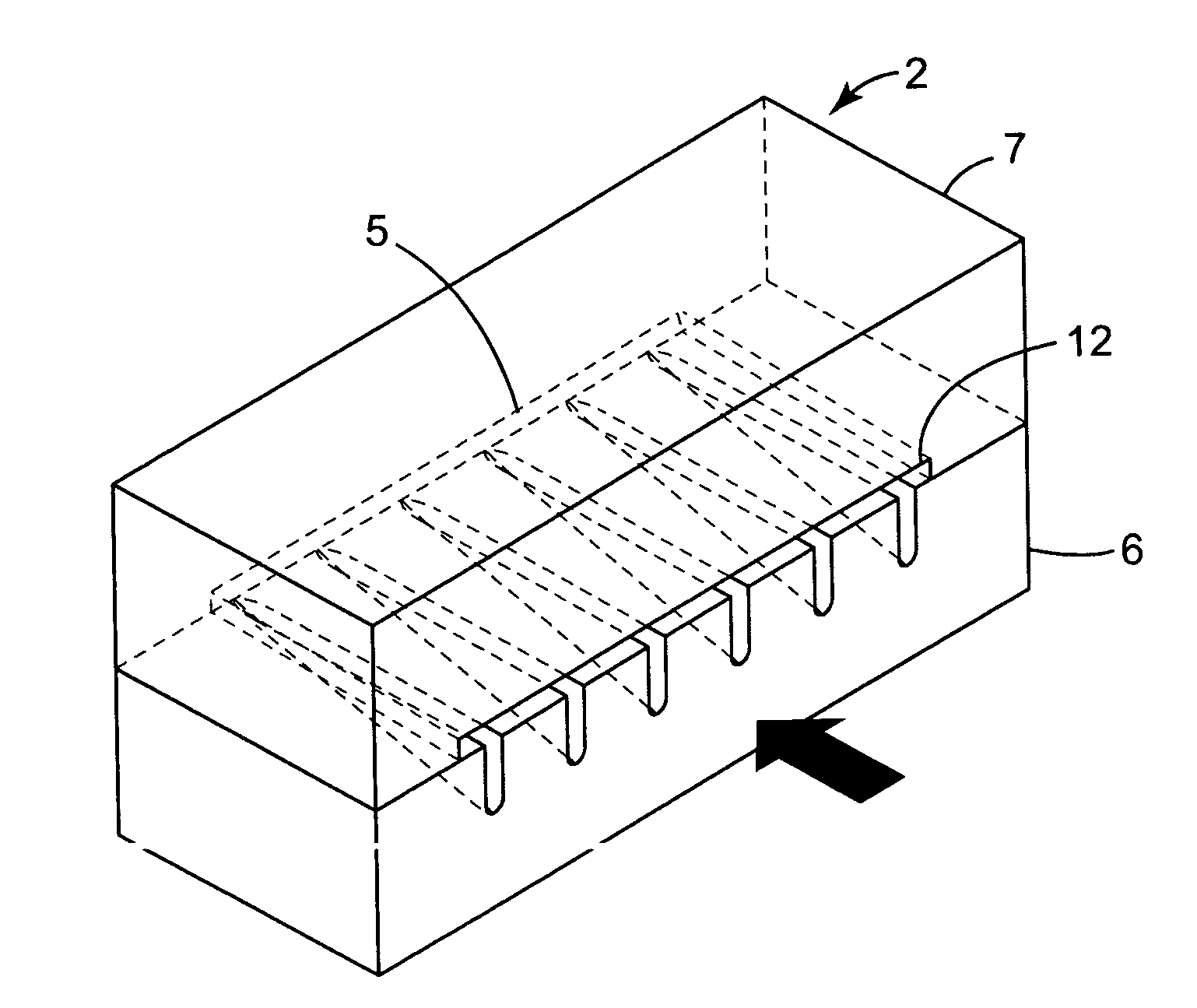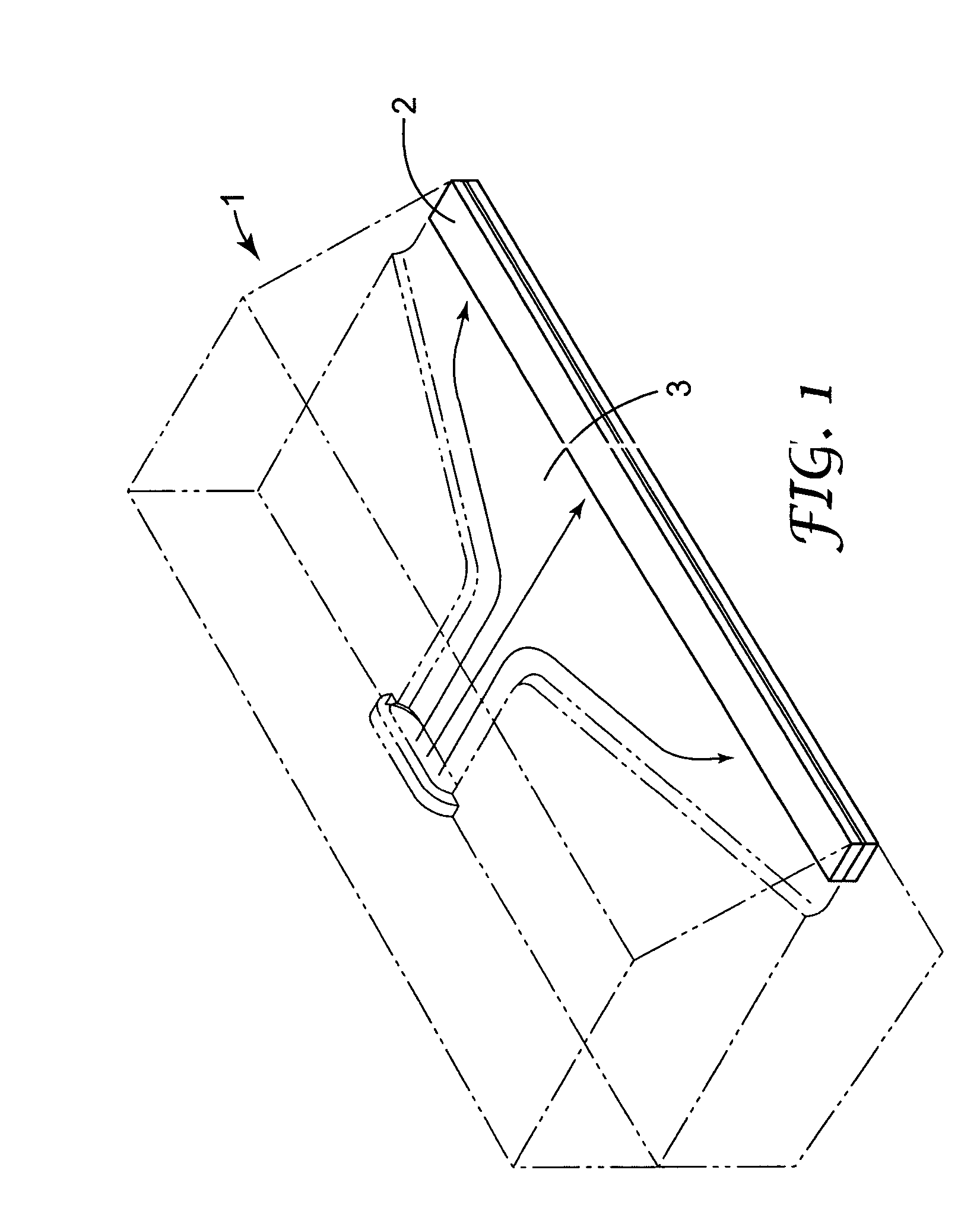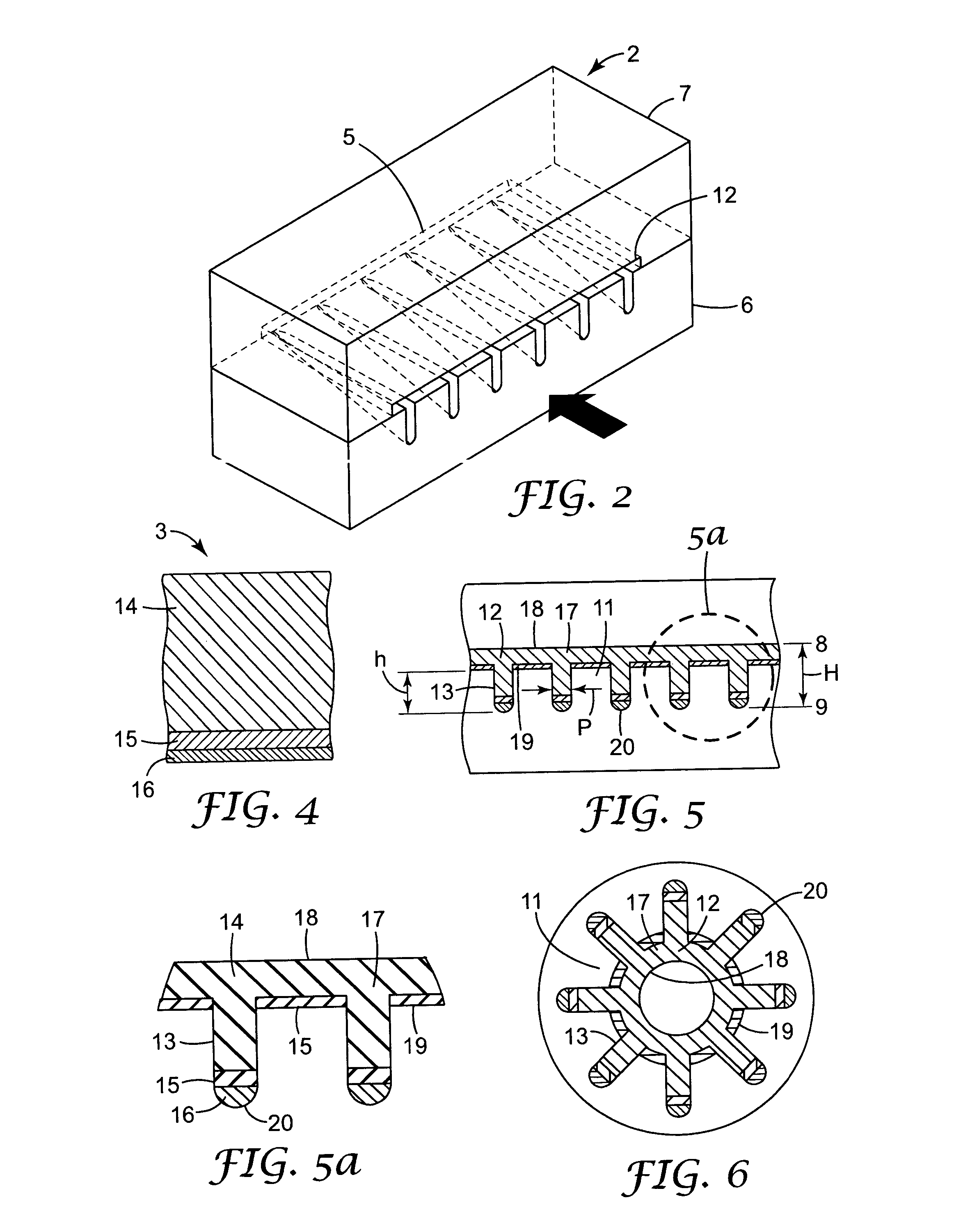Method of extruding articles
a technology of extruding articles and forming methods, which is applied in the direction of dough shaping, manufacturing tools, applications, etc., can solve the problems of complex flow interactions, unreliable extrusion effect, and difficult extrusion,
- Summary
- Abstract
- Description
- Claims
- Application Information
AI Technical Summary
Problems solved by technology
Method used
Image
Examples
example 1
[0086]A coextruded profiled web was made using conventional apparatus except three extruders were used to produce a 3 layer structure consisting of a first ‘A’ blue layer, a second ‘B’ red layer and a third ‘C’ red layer. The ‘B’ and ‘C’ red layers act as one layer because they are of the same material. The first layer was produced with a polypropylene / polyethylene impact copolymer (99% 7523, 4.0 MFI, Basell Polyolefins Company, Hoofddorp, Netherlands) and 1% blue polypropylene-based color concentrate. The second and third layers were produced with 98% 7523 polypropylene / polyethylene impact copolymer and 2% red polypropylene-based color concentrate. A 6.35 cm single screw extruder was used to supply 7523 copolymer for the first layer, a 3.81 cm single screw extruder was used to supply 7523 copolymer for the second layer and a 2.54 cm single screw extruder was used to supply 7523 copolymer for the third layer. The barrel temperature profiles of all three extruders were approximately ...
example 2
[0087]A coextruded profiled web was made as in Example 1 except the blue ‘A’ layer was produced using a styrene-isoprene-styrene block copolymer (KRATON 1114, Kraton Polymers Inc., Houston, Tex.). Partitioning of the layers resulted in a web similar to that shown in FIG. 30 having elastic properties in the transverse direction and inelastic properties in the machine direction. The basis weight, thickness, and other structural parameters of the web are reported in Table 1 below.
example 3
[0088]A coextruded profiled web was made as in Example 1 except the ‘A’ and ‘C’ layers were produced using 99% 7523 copolymer and 1% blue color concentrate, and the ‘B’ layer was produced using 99% 7523 copolymer and 1% white color concentrate. A die insert similar to that shown in FIGS. 2 and 3 was used to shape the extrudate. Partitioning of the layers resulted in a web similar to that shown in FIG. 13. The basis weight, thickness and other structural parameters of the web are reported in Table 1 below. The flow rates of the extruders were adjusted to reduce the overall basis weight by about 50 percent.
PUM
| Property | Measurement | Unit |
|---|---|---|
| angle | aaaaa | aaaaa |
| angle | aaaaa | aaaaa |
| angle | aaaaa | aaaaa |
Abstract
Description
Claims
Application Information
 Login to View More
Login to View More - R&D
- Intellectual Property
- Life Sciences
- Materials
- Tech Scout
- Unparalleled Data Quality
- Higher Quality Content
- 60% Fewer Hallucinations
Browse by: Latest US Patents, China's latest patents, Technical Efficacy Thesaurus, Application Domain, Technology Topic, Popular Technical Reports.
© 2025 PatSnap. All rights reserved.Legal|Privacy policy|Modern Slavery Act Transparency Statement|Sitemap|About US| Contact US: help@patsnap.com



